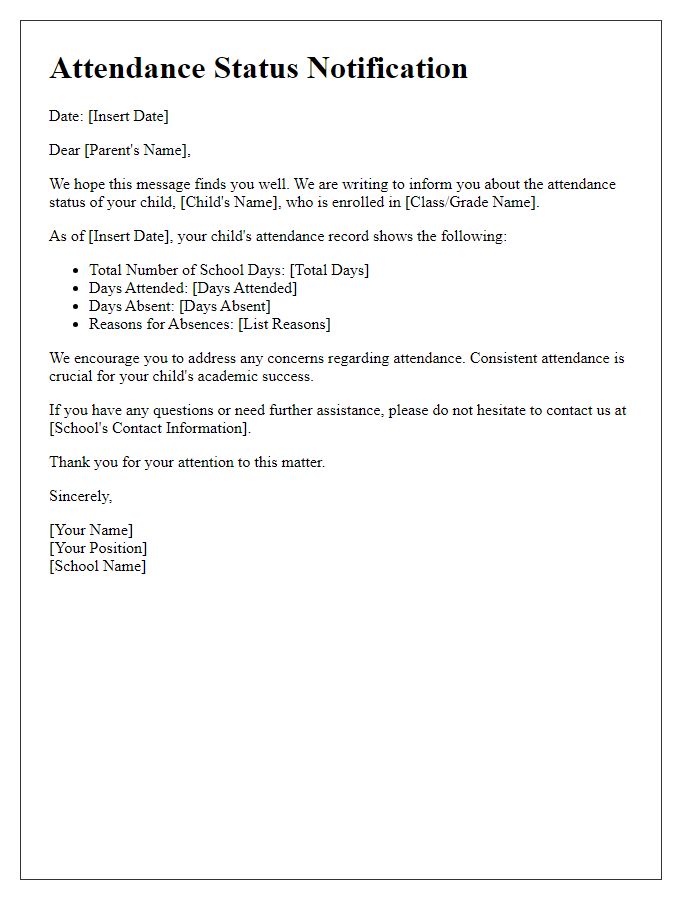Hey there! If you've ever found yourself in need of a quick and effective way to verify class attendance, you're in luck. This article will guide you through a simple letter template that makes the process a breeze, ensuring you capture all the essential details. Ready to streamline your attendance verification? Dive in to discover more!

Student's full name and identification number
Class attendance verification is essential for educational institutions to track student participation. Accurate records include student's full name, such as Johnathan Michael Smith, and identification number, typically a unique identifier like 12345678. This information, collected through attendance sheets or digital platforms, ensures accountability and allows for monitoring of attendance trends. Regular verification helps institutions maintain compliance with policies regarding attendance and can impact students' academic standing or eligibility for certain programs, like scholarships or extracurricular activities.
Dates of attendance and course details
Class attendance verification provides essential documentation for educational institutions, ensuring accurate record-keeping of students' participation. Attendance records typically include specific dates (for example, September 5, 2023, to December 15, 2023) for each session of the course. Course details should specify the title of the course, such as "Introduction to Psychology," course code (e.g., PSY101), along with the instructor's name (Professor Jane Smith) and the number of credit hours (three credits). These records are vital for processes like grading, financial aid eligibility, and verifying student progress towards graduation requirements at institutions like State University.
School or institution's official letterhead
School attendance verification serves as a formal record of a student's presence in classes during a specific period. Attendance tracking is crucial for ensuring academic integrity and compliance with educational regulations. Institutions typically utilize official letterhead, which includes the school's name, logo, address, and contact information, to authenticate the document. Within the verification letter, important details such as the student's full name, grade level, and attendance dates are included. The document may also reference school policies regarding attendance and the implications of absenteeism on academic performance. Signatures from school administrators or attendance officers provide added credibility to the verification process.
Authorized signature and contact information
Class attendance verification relies on diligent record-keeping and communication. Schools often require an authorized signature from instructors or administrators to validate attendance records. Essential contact information, including the institution's name, address, phone number, and email, must accompany the signature. This process ensures verification accuracy, fostering accountability among students and teachers alike. Access to such documentation can be crucial for students applying for scholarships, internships, or academic programs that require proof of attendance and participation. Proper documentation not only serves immediate verification needs but also supports long-term academic records.
Statement of verification and purpose of letter
The purpose of this letter is to verify the attendance of students enrolled in academic institutions, ensuring accurate record-keeping for academic and administrative purposes. Attendance verification plays a critical role in assessing student engagement, tracking participation rate, and complying with institutional policies regarding attendance requirements. This statements can be utilized to confirm individual attendance records, validate presence for specific classes or events, and provide necessary documentation for administrative processes such as financial aid eligibility, academic evaluations, or scholarship application processes. Accurate attendance verification also aids in generating statistical insights on class participation and student performance trends across various departments within the educational establishment.
Letter Template For Class Attendance Verification Samples
Letter template of attendance certification for extracurricular activities.













Comments